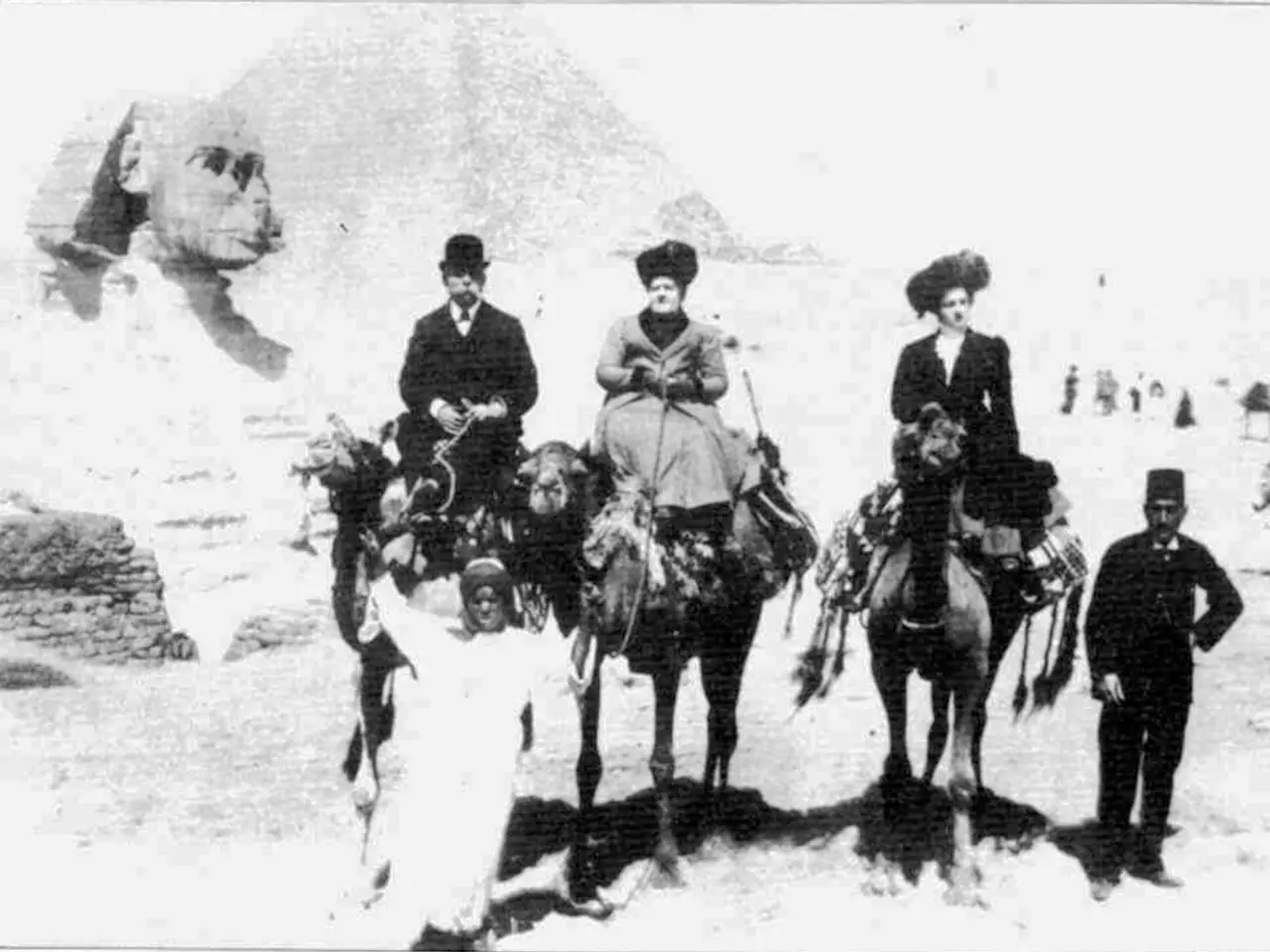12,000-Year-Old Rock Art Discovered in Arabian Desert
Archaeologists have unearthed a remarkable collection of ancient rock art in the Nafud Desert of northern Arabia. These engravings, dating back over 12,000 years, offer a glimpse into the lives of early humans who survived and thrived in the harsh desert conditions.
The engravings, discovered at three main sites, depict over 176 life-sized and naturalistic animals such as camels, ibex, and gazelles. One striking panel at Jebel Misma features 23 life-sized camels and equids stretching 23 meters across a cliff face, about 128 feet off the ground. These artworks were likely created during a period of warmer climate around 16,000 to 13,000 years ago, when seasonal water bodies called playas appeared, creating 'freshwater corridors' that people traveled through and eventually settled in.
The hunter-gatherers who created these engravings were skilled survivors, capable of navigating the desert's perils. They may have used the engravings as practical guides to oases, marking important watering holes. Artifacts found at the sites, including El Khiam points and a Helwan bladelet, suggest contact with Natufian and early Neolithic cultures of the Levant. The discovery of Dentalium shell beads also hints at long-distance exchange networks or trade with others who traveled vast distances.
The discovery of these ancient rock engravings provides a unique window into the lives of our early ancestors who inhabited the Arabian desert. Their art, created under perilous conditions, showcases their skill, adaptability, and connection to the natural world. Further study of these engravings promises to reveal more about this forgotten chapter of human history.
Read also:
- Postpartum Period and Gestational Diabetes: Does it Persist?
- Controlled spree of Legionnaires' disease among Harlem residents ceased, city health authorities confirm; however, locals push for increased openness and information disclosure
- Transform City for the Better
- Prostate Cancer Examination Guidelines, Outcomes, and Financial Aspects







